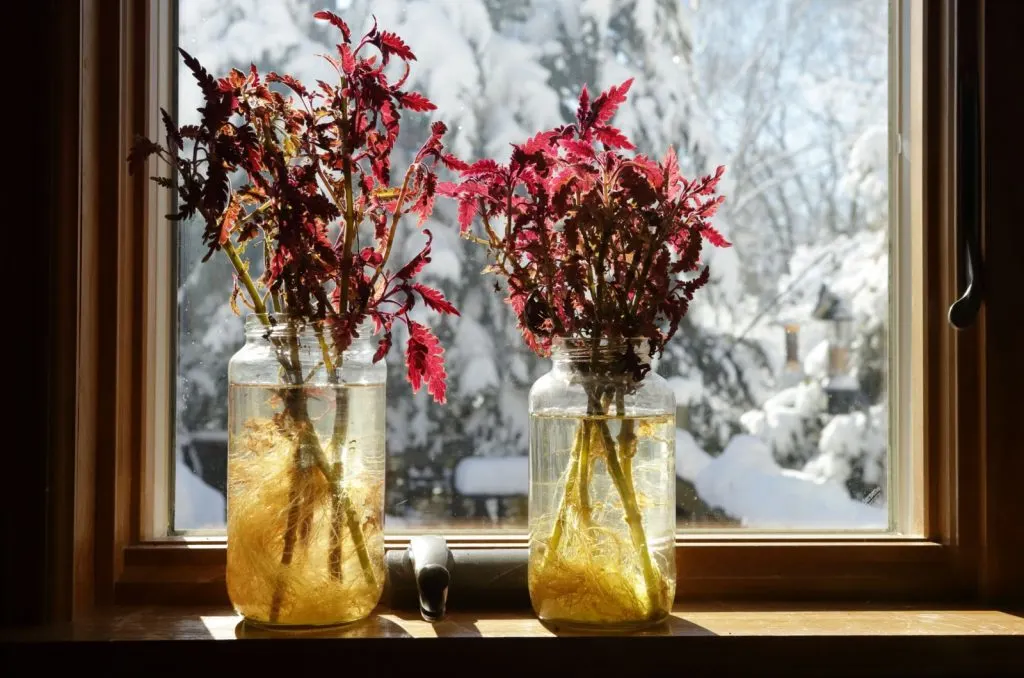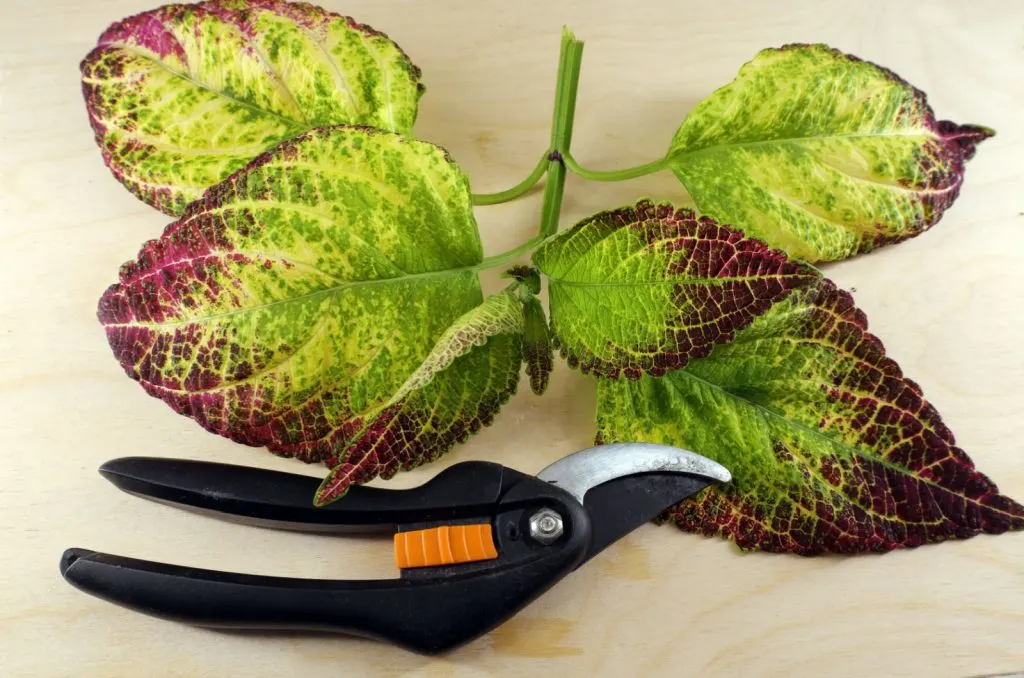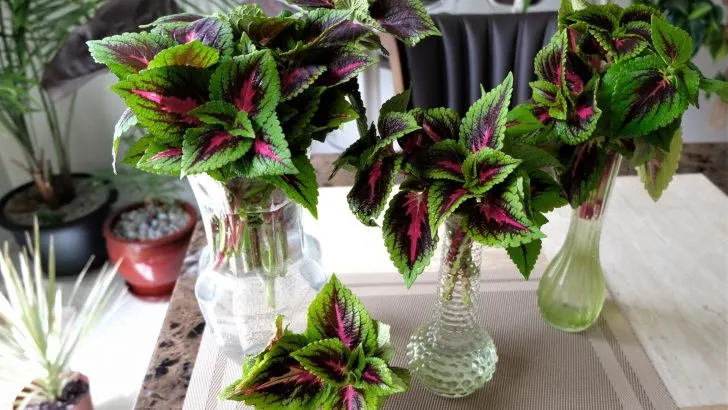Nothing adds a burst of color to indoor and outdoor spaces quite like Coleus. This ornamental plant thrives both indoors and outdoors, which makes it a favorite among gardeners.
Whether you’re growing your Coleus as an annual or a perennial outdoors, it also makes an excellent houseplant. I always recommend growing Coleus in containers because it allows you to enjoy it outside during warmer months and easily bring it indoors when temperatures start to drop.
One thing’s for sure: once you start growing Coleus, it’s hard to stop at just one plant. In this article, I’ll show you how to propagate Coleus and quickly expand your collection!
Let’s dive in!
1. Propagating Coleus from Seeds

If you don’t already have a Coleus plant and don’t want to spend much money on one, seeds are a great option.
Believe it or not, for the price of a single Coleus plant, you can get over 400 seeds, giving you the chance to grow plenty of plants at a fraction of the cost.
You’ll often find Coleus seeds in seed mixes with other plants that have similar growing requirements. Remember that Coleus is a shade-loving perennial that thrives under trees or in other areas of your garden that don’t get a lot of direct sunlight.
There are two ways to grow Coleus from seeds. The first method is to start the seeds indoors and later transplant the seedlings into your garden. The second option is to directly sow the seeds outdoors once temperatures are warm enough.
This propagation method is perfect for anyone looking to add a colorful array of Coleus to their garden without breaking the bank.
How to Sow Coleus Seeds
Since Coleus seeds are tiny, it’s best to lightly sprinkle them on top of the growing medium and cover them with a thin layer of soil.
Remember, light is essential for the germination of Coleus seeds, so don’t block it by covering them too much.
Keep the seeds in a room where the temperature is between 70 and 75°F. If you’re starting them indoors, investing in a heating mat can help maintain consistent warmth.
If you’re planting outdoors, make sure the threat of frost has passed. However, if you live in an area with a short growing season, I recommend starting Coleus seeds indoors 2-3 months before the last expected frost.
A seed-starting mix or soilless mix works well for Coleus seeds, as they don’t need nutrients until they’ve germinated. If these are unavailable, high-quality potting soil will also do the trick.
If you already have Coleus plants in your garden, there’s another way to get seeds. After your plant has finished blooming, collect the seeds from the dried flower heads by cracking them open and gathering the tiny seeds inside.
2. Water Propagation of Coleus

Water propagation is a popular and effective method for rooting Coleus cuttings. If you have a healthy and mature Coleus plant, you can easily take cuttings and root them in water.
What’s great about this method is that it gives you an exact replica of your existing plant, ensuring you can expand your collection with the same vibrant variety.
Here are the steps to propagate Coleus using water:
1. Start by cutting a healthy stem just below the lowest node and remove the leaves from the lower part of the cutting.
2. Place the cutting in a jar or clear vase filled with fresh water. Coleus is one of the many plants that thrive in water, so they’ll have no trouble forming new roots.
3. If you prefer not to leave the Coleus in water long-term, wait until the cuttings have grown new roots and then transplant them into well-draining soil.
4. Keep the soil evenly moist until the cutting is fully established and shows signs of new growth.
3. Propagation in Soil

The final method for propagating Coleus is planting the cuttings directly into the soil. The first step is the same as with water propagation: cut the stem below the lowest node and remove the bottom leaves.
Next, prepare your potting mix, making sure it contains well-draining materials. Unlike when starting from seeds, Coleus cuttings need nutrients to grow, so use a nutrient-rich potting mix.
You can use a rooting hormone to encourage faster growth, though it’s not strictly necessary, as Coleus generally roots easily.
Place the cutting in bright, indirect light, and ensure the soil remains consistently moist (but not soggy).
Once you see new growth emerging from the cutting, congratulations—you’ve successfully propagated your Coleus!
If you choose to move your plant outdoors during the warmer months, be sure to follow proper overwintering tips to protect it from cold damage when the temperature drops.
Propagating Coleus is easy, and even beginners can do it by following these steps. Soon, you’ll have an array of colorful Coleus plants adorning your home or garden!

